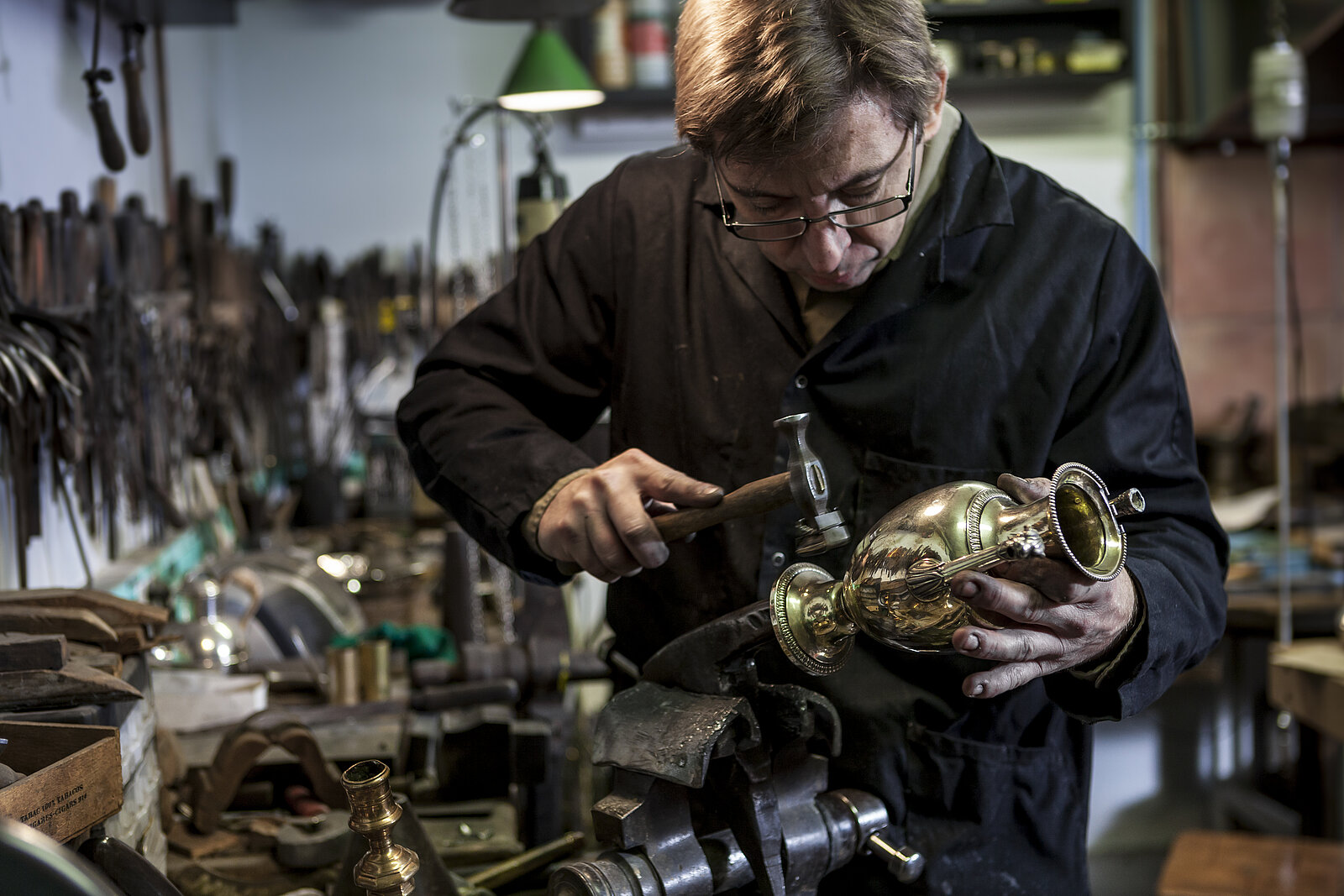From exquisite tradition to timeless brilliance: French goldsmithing at the pinnacle of craftsmanship
September 2023 87 Avenue Daumesnil

From humble beginnings in medieval monasteries to the sumptuous splendor of royal courts, French goldsmithing has evolved through the ages, intertwining with the artistic trends of each era.
Since ancient times
Goldsmithing is one of the oldest and most prestigious crafts in the world of craftsmanship, dating back thousands of years. This artisanal practice involves working with precious metals such as gold, silver, and platinum to create decorative and functional objects of great artistic and aesthetic value.
The history of silversmithing dates back to antiquity, where artisans mastered the art of casting, hammering to shape jewelry, vases, cups, and other objects from precious metals. These pieces were often intended for nobility, kings, and dignitaries, symbolizing their status and wealth.
Over the centuries, silversmithing evolved, adapting to different eras, styles, and cultures. Metalworking techniques became more refined, and new methods were developed, such as chasing, enameling, and gemstone inlay.
Silversmithing also played a significant role in the development of trade and the economy. Therefore, silversmith artisans were often grouped into guilds, where they exchanged knowledge and techniques while safeguarding the secrets of their craft.
An ever-renewed excellence
During the Middle Ages, French silversmithing emerged in the atmosphere of Gothic cathedrals and monasteries. Artisans, inspired by their faith and devotion, created liturgical objects of already striking beauty.
The iconic Sainte-Foy reliquary from Conques, dating back to the 9th century, is remembered. This majestic work in gold and silver, adorned with precious stones, exemplifies the technical excellence of the silversmiths of that era and their ability to bring intricate designs to life.
At the dawn of the Renaissance, French silversmithing reached the pinnacle of its art. Royal courts became passionate patrons, commissioning sumptuous pieces to display their power and refinement, much like « The Saliera of Francis 1st », a gold and enamel salt cellar created by the silversmith Benvenuto Cellini. This exceptional piece combines elegance and sophistication, capturing the very essence of Renaissance silversmithing.
Under the reign of the Sun King, French silversmithing, loyal to its king, knew no bounds in terms of opulence. The pieces created during this period reflect the absolute power of the monarchy. The Crown's silverware service, crafted by the finest artisans of the time, is a shining example. These sumptuous pieces, like the famous « Soup Tureen with Shells », are adorned with floral motifs and intricate details, inlaid with precious stones and mother of pearl.
In the 19th century, French silversmithing underwent a period of transformation. Romantic influences and artistic movements such as Neoclassicism and Art Nouveau made their mark. French artisans began to explore new materials, such as glass and enamel, to create pieces of subtle elegance. This is exemplified in the work of the silversmith Pierre-Philippe Thomire, who skillfully blended antique inspiration with naturalistic elements in his creations.
The 21st Century Revolution
While tradition remains at the heart of French silversmithing, 21st-century artisans are also exploring new creative paths. They are now pushing boundaries by using unconventional materials such as titanium, blown glass, and composite materials. Computer-aided design (CAD) techniques and 3D printing are also employed to create bold and intricate pieces. This combination of tradition and innovation continuously revitalizes the dynamism of contemporary silversmithing.
Silversmithing remains a highly specialized craft, demanding precise craftsmanship and perfect technical mastery. Silversmith artisans devote years to honing their skills, often passing down their expertise from generation to generation, as seen with Marischael Orfèvre.
The house of Nicolas Marischael and its four generations of silversmiths embody the excellence of French silversmithing, perpetuating a centuries-old legacy while embracing innovation. With exceptional craftsmanship and unwavering commitment to quality, the house continues to create silversmithing pieces of unmatched beauty. By blending tradition and modernity, Marischael Orfèvre is writing a new chapter in the history of French silversmithing, imprinting its style in the story of this precious art.
Viaduc des arts (1-129 avenue Daumesnil, 75012 Paris)
Paris celebrates 100 years of artisanal excellence! July 202515, 73 et 111 avenue Daumesnil, 75012 Paris
Maison Tassin has moved into the Viaduc des arts May 2025111 avenue Daumesnil, Paris 12
A day in time, where the art of costume meets photography February 202569 avenue Daumesnil, Paris 12
The Viaduc des arts is celebrating this December: discover the program December 20241-129 avenue Daumesnil, Paris 12
Cécile et Jeanne, jewellery creation since 1990 November 202449 avenue Daumesnil, Paris 12
At La Fabrique nomade, refugee artisans reconnect with their craft November 20241bis avenue Daumesnil, Paris 12
Estampille 52, high-end cabinetry November 202491 avenue Daumesnil, Paris 12
Serge Amoruso, high-end leather goods at heart October 202437 avenue Daumesnil, Paris 12


